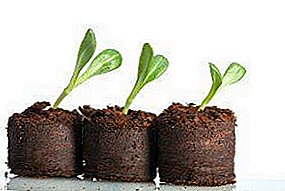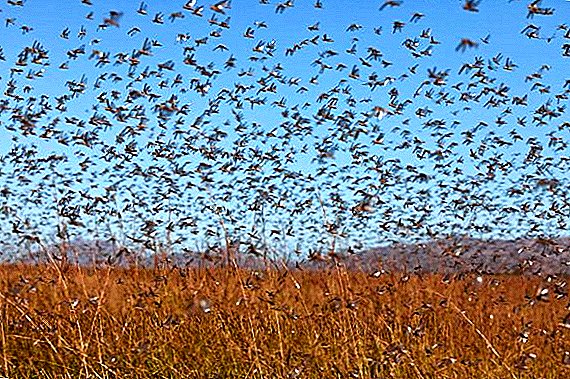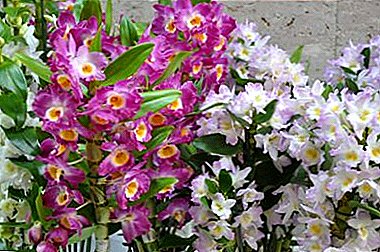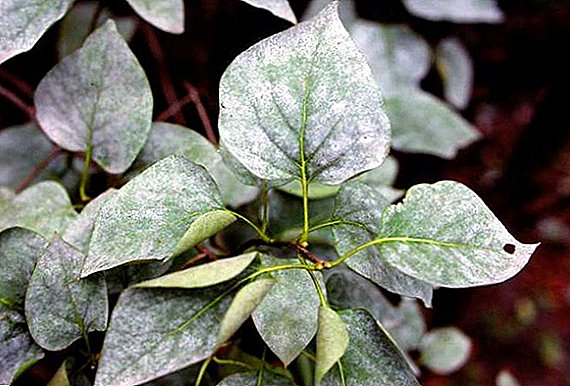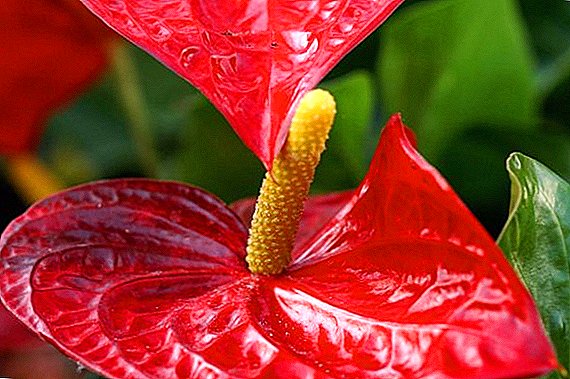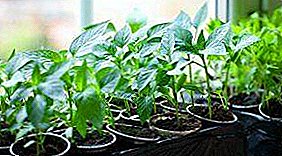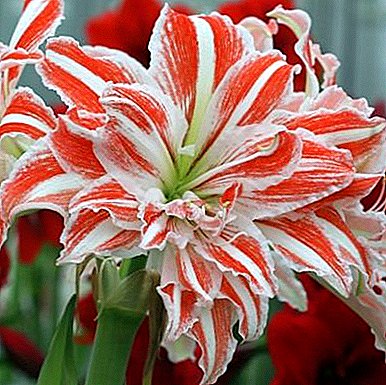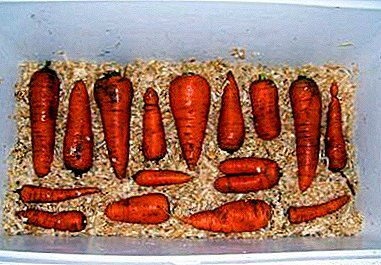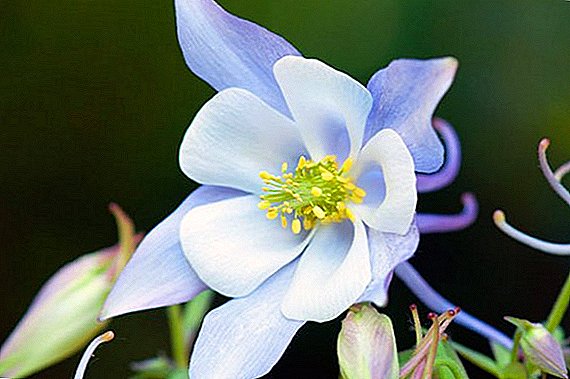 Unusual in appearance and in name is a plant aquilegia, or catchment.
Unusual in appearance and in name is a plant aquilegia, or catchment.
Because of the unique shape of the flower, it is also called the "shoe of the elves", and also the eagle or the dove.
Many gardeners say that its flowers resemble orchids.
Choosing a place in the flowerbed
The catchment refers to the unassuming plants. It is undemanding to the composition of the soil, but it will be better to grow and bloom on light, loose humus soils.  Aquilegia is a shade-loving plant. Therefore, it is better to place it in a shade, and not in sunny areas. If the flower bed is on the south side, then young seedlings should be protected from direct rays.
Aquilegia is a shade-loving plant. Therefore, it is better to place it in a shade, and not in sunny areas. If the flower bed is on the south side, then young seedlings should be protected from direct rays.
To shade-loving plants also include such as aglaonema, rogers, tiarella, trillium, pelley, brunner, buzulnik, astilba, dicentre, mimulus, bathing suit, host.
The flower feels great in the shade of other plants. This does not mean that the eagles do not grow in the sun, they just will not be so luxurious, and their flowers will be smaller.
The watershed is able to decorate any area. He has not only unusual flowers, but also beautiful leaves. With the help of a variety of shapes and colors, you can create different compositions.
Did you know? In the Middle Ages, aquilegia was considered a protector from witchcraft.

There are tall and undersized varieties, and they are used in various fields:
- undersized aquilegia planted on alpine slides or stony compositions;

- tall plants placed among perennials in flowerbeds, and near water.

Good companions for a catchment are shade-loving hosts, ferns, or various decorative cereals.
Good neighbors will be bathing or bells.
Site preparation
Although aquilegia and picky, but still before landing you need to prepare the site:
- humus or compost can be added to improve the quality of the land;
- for loosening - pour sand;
- dig the ground to a depth of 20 cm.
Seed life
Shelf life of seed material only 1 year.
Important! The seeds of the catchment are poisonous, so care must be taken when working with them.
 It is better to sow the seeds immediately after harvest. If this is not possible, then they should be stored in a cool room.
It is better to sow the seeds immediately after harvest. If this is not possible, then they should be stored in a cool room.You can also mix them with the earth and keep them in the refrigerator until sowing. If you are not sure of the suitability of the seeds, then treat them with "Epin" or "Zircon".
Check out the most popular varieties of aquilegia.
Sowing seeds straight into the ground
The simplest and most effective way of breeding aquilegia is sowing seeds. It can be carried out both in the spring, and in the fall. But first, the seed must undergo stratification. With autumn sowing this will occur naturally (winter frosts).
In the autumn, collecting the seeds, they are scattered on the soil surface. Above the site it is necessary to place a container without a bottom or a structure made of plates. Cover the top of the canvas and leave it for the winter. When autumn sowing in early spring we will have ready seedlings.
In spring, when there will be 3-4 leaves on the shoots, they should be transplanted to a permanent place. The planting scheme depends on the variety.  So, low-growing plants are planted 25-30 cm apart, and tall ones - 40-45 cm. The wells are well watered.
So, low-growing plants are planted 25-30 cm apart, and tall ones - 40-45 cm. The wells are well watered.
The eagles have a lot of self-seeding. It can also be planted in the spring to the right place, as ready-made seedlings.
Growing seedlings at home
If you want to collect the seeds yourself, so that they do not get enough sleep, put cloth bags on the boxes.
Seed stratification
A month and a half before spring sowing, the storage temperature is lowered to 0 ° C — this is called stratification or hardening. Similarly, it acts on seed material and hot processing: a month before sowing, the material is placed in a thermostat with a temperature of +35 ° C.  Before sowing, the treated seeds are washed. After that, you can also carry out scarification, this is done with "zero" sandpaper. Seeds or with a light pressure rolled on it, or, putting them on a flat surface, rub the sandpaper. But this must be done with ease, so as not to damage the insides of the seeds.
Before sowing, the treated seeds are washed. After that, you can also carry out scarification, this is done with "zero" sandpaper. Seeds or with a light pressure rolled on it, or, putting them on a flat surface, rub the sandpaper. But this must be done with ease, so as not to damage the insides of the seeds.
Soil mixture
The soil for seeding a watershed needs to be prepared in advance. Its structure in equal parts includes:
- sand;
- leaf humus;
- sod land.
Approximately one day before sowing, the substrate is poured into boxes and compacted a little. Water the earth with a weak solution of potassium permanganate.
Capacity
For growing seedlings aquilegii better to take deep boxes. This is due to the fact that the plant has a taproot, that is, the main root of considerable length. 
Sowing seeds
Sowing is done in March. Spread the seeds on the previously prepared moist soil (crops should not be too thick).
Lightly press down with hand or roll in a can and sprinkle with soil mixture of 3 mm.
Moisturize the top layer of the spray bottle and cover the box with something transparent (glass or plastic). Capacity with crops put on the lit place.
Conditions and care for crops
The glassed-in balcony will be the ideal place for growing seedlings. 
It requires the following conditions:
- temperature + 15 ... +17 ° С;
- shading from direct sunlight;
- small-drop watering (from a spray).
In a week or two, shoots appear. Now the film or glass can be removed. Further care is moderate watering.
Important! You need to make sure that there is no waterlogging. Otherwise, seedlings may die from root rot.
Dive seedlings in separate pots
In late April, when the seedlings will have a pair of true leaves, it is necessary to transplant (dive).
Find out what plants need and pick.
With this process, it is not necessary to tighten, in order to injure the growing root system less.  With the pick done on time, the catchment will take root faster and be less sore. The most appropriate time for this is morning or evening.
With the pick done on time, the catchment will take root faster and be less sore. The most appropriate time for this is morning or evening.
For a dive, you need to use pots of peat or disposable cups (then they are cut) to damage the roots less when disembarking to a permanent place.
Transplanting seedlings in open ground
When the threat of spring frosts has passed, and the soil warms up to + 15 ° С, seedlings can be planted on a flower bed.
You will be interested to know how to make a bed of tires or stones with your own hands.
It will be around the end of May. Some flower growers advise not to immediately disembark at a permanent place, but to place them on re-growing until August or even next year, and only then transplant to a permanent place.  But this way the plant will get sick more than once, but twice. Therefore, it is more expedient to plant all the same at the place of constant growth.
But this way the plant will get sick more than once, but twice. Therefore, it is more expedient to plant all the same at the place of constant growth.
When will the catchment of seeds bloom
The catchment grown from seeds blooms only in the second year. And he will demonstrate all his beauty only for the 3rd and 4th year. Aquilegia is easily pereopyletsya, so the flower stalks should be cut, and the collected seeds should be planted further from the mother plants.
To avoid unauthorized hybridization, the catchment is not recommended to be grown in one place for more than 5 years. Although when over-polishing there is a chance of getting hybrids with a new and unusual color.
Did you know? Due to the similarity of the shape of a flower with a clown cap for some peoples, aquilegia is considered a symbol of stupidity.
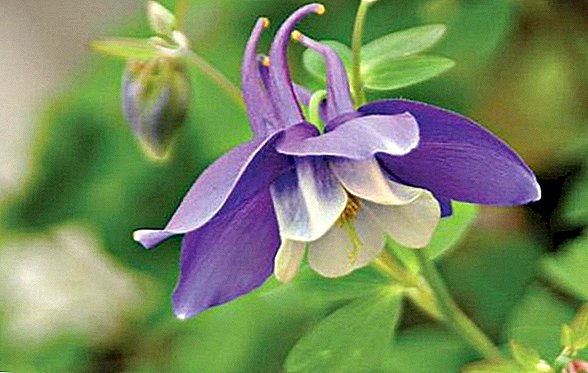
Further care
Water collection will be needed in the future:
- timely removal of weeds;
- fertilizing;
- moderate watering;
- loosening the soil;
- garter tall varieties.
Aquilegia has a long taproot, so it rarely suffers from a lack of moisture. Sometimes, especially after watering or rain, it is necessary to loosen the top layer of soil.
The roots of the catchment area, growing, rise above the ground, they need to sprinkle with peat or soil. Do it in the spring and summer.
If you want to observe lush flowering, apply mineral fertilizers.
Mineral fertilizers include Plantafol, Sudarushka, Azofoska, Kristalon, Ammofos, Kemira, and Master.

Per square meter:
- 50-60 g of superphosphate;
- 15-20 g of potassium salt;
- 20-30 g saltpeter.
In the summer of plants can be watered mullein.
Some varieties grow to 80 cm, so they must be tied up. You can do this with twine. Bind the flower to the wooden pegs.
In the autumn should be cut out old shoots. If in the summer the roots protruding from the ground were poorly powdered, then for the winter they would be good to be mulched with compost mixed with manure. So you can solve two problems at once: both fertilizer is applied and the roots are saved from freezing.  Aquilegia is popular not for the first century due to its unpretentiousness, as well as low-key, but fascinating beauty. Planting it in your flower garden, you definitely will not regret.
Aquilegia is popular not for the first century due to its unpretentiousness, as well as low-key, but fascinating beauty. Planting it in your flower garden, you definitely will not regret.
Feedback from network users

propagated by dividing the bush and sowing seeds. When sowing, seeds require stratification. You can sow in the exhaust gas before winter. Blooms in the second year.



